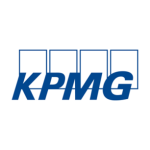In recent years the Chinese government has progressively replaced administrative pre-approvals for various tax treatments and regulatory licences with tax authority record filing requirements. This has been coupled with more targeted and effective procedures for follow-up audit and review.
In the corporate income tax (CIT) space, State Administration of Taxation (SAT) Announcement 76, issued in 2015, provided that all CIT preferential treatment pre-approvals would be fully replaced by record filing requirements. Taking the next step, SAT Announcement 23, issued on April 25 2018, has abolished the record filing requirement. In its place, new, simplified, self-assessment procedures will apply, starting from the CIT annual filing for the 2017 tax year.
Building on Announcement 76, Announcement 23 makes several changes:
Simplified procedures for claiming CIT benefits. Taxpayers are now required to assess for themselves whether they qualify for the CIT preferential treatment, and declare the CIT incentives they adopted in their CIT annual filing. They are no longer required to send documentation, up front, to the tax authorities for consideration. Instead, taxpayers are required to keep supporting documentation on file, in case of future audit;
Supporting documents classified as 'principal' or 'other' documents: Taxpayers are required to collect and maintain on file the tax relief supporting documents, listed as 'principal documents' in the new list of CIT preferential items (2017 version). Documents listed as 'other documents', by contrast, do not need to be maintained on file, but may need to be produced by the taxpayer, if and when the authorities request them, to clarify uncertain matters;
Follow-up administration. Under Announcement 23, taxpayers in the software and integrated circuit (IC) sectors, who have claimed CIT incentives, must submit their principal supporting documents to the authorities before the deadline for CIT annual filing (i.e. May 31). For other taxpayers, the follow-up tax administration requirements will be set out by their provincial tax authorities. Tax authorities will strengthen their follow-up administration; and
The 2017 version list of CIT preferential items: Complexity can arise from a broad range of CIT preferential items including tax exemptions, tax basis deductions, super deductions, accelerated depreciation, tax credits, and tax rate reductions. The 2017 version of this list, replacing the list from 2015, introduces greater consistency between the listing and the various CIT filing forms.
Announcement 23 is a welcome development for taxpayers, as the self-assessment system should lower the compliance burden for accessing various incentives, such as the 15% CIT rate for high and new technology enterprises. The new rules are in line with the SAT's broader programme to simplify tax administration set out in 2017 in SAT Circular No 101.
At the same time, the new approach, by shifting responsibility to taxpayers to ensure that they fully meet the incentive criteria, increases their risk of penalties if an adopted incentive is later determined inappropriate on audit. As such, taxpayers may consider enhancing their internal risk control systems for better oversight over incentive treatment evaluation and documentation processes, as well as seeking professional advice, as necessary. It should be noted that while these CIT benefits are now being administered on a self-assessment basis, the benefits available under other Chinese taxes still follow a record filing-based approach, whereby documents need to be filed up front.
In addition to the simplified procedures for accessing CIT benefits, some opening-up measures that were announced by Chinese President Xi Jinping at the Bo'ao Forum for Asia in April, have now been put in place. From July 1 2018, import tariffs on automobiles that fall under 139 HS-codes (25% or 20% under existing rules) and auto parts that fall under 79 HS-codes (25%, 20%, 15%, 10% or 8% under existing rules), will be reduced to 15% and 6% respectively. Most-favoured-nation tariff rates for 1,449 imported consumer products will also be reduced from July 1, meaning reductions in the customs duty on many foodstuffs, cosmetics and garments.













